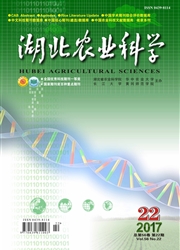

 中文摘要:
中文摘要:
以北京山区为研究区域,采用遥感影像数据和DEM数据结合实地数据采集验证,利用GIS技术作出量化统计分析,研究北京周边山区植物优势种群分布状况,并在此的基础上,进一步探究北京山区植物优势种群分布规律,分析植物优势种群分布与海拔、坡度坡向、降水量、土壤岩性和温度的关系.结果表明,北京市山区主要优势种群为乔灌草植物组成的46个种群;随着地形地貌的改变,海拔升高,气温逐步下降,太阳辐射不断增强,平榛、毛榛等因生物特性耐寒成为该区域的优势物种,占据主导地位;阳坡与阴坡,光照时长和光照强度不同,阳坡优势种群为喜光耐旱的植物,阴坡优势种群为耐阴喜水植物;在一定程度上,降雨量的高低决定了一些对水分依赖性大的植物的生长,而且,在水分充足时,同种类的植物生长状况愈加良好,植被的覆盖度增加,叶面积指数更大,枝叶较为茂密;在土壤厚度大、有机质含量高、pH偏小的地区,植物优势物种为较高大的乔木,随着土壤厚度和有机质含量的降低,pH增大,植物优势物种逐步演变为灌木类植物和草本类植物.
 英文摘要:
英文摘要:
The distribution of plant dominant population in the mountains outside Beijing was studied by collecting and validating remote sensing image and DEM data combined with field data.A quantitative statistical analysis was made by GIS technology.Based on this,the distribution law of plant dominant population in the mountains outside Beijing was studied and the relationships between distribution of plant dominant population and the altitude,gradient and aspect of slope,rainfall capacity,soil lithology,temperature was analyzed.The results showed that the dominant population were 49 groups of arbor,shrub and herbage.With the change of the terrain environment,and the increases of altitude,the temperature decreased gradually.The radiant became stronger.Corylus heterophylla Fisch and Corylus mandshurica became the dominant species.The sunshine duration and intensity was different between the sunny slope and cludy slope.The dominant plant in sunny slope enjoyed sunshine was drought-tolerant while the dominant plant in cloudy slope enjoyed water was shade-tolerant.To some extent,the rainfall amount decided the growth of the water-dependent plant.When water was enough,the same plant grew better,the plant coverage increased and leaf area index was bigger and the leaves were more flourishing.In a area with thick soil,high content of organics,and low pH,the dominant specie was tall trees.With the decrease of the soil thickness and organic content,the pH increased and the dominant species gradually turned into shrub and grass.
 同期刊论文项目
同期刊论文项目
 同项目期刊论文
同项目期刊论文
 期刊信息
期刊信息
